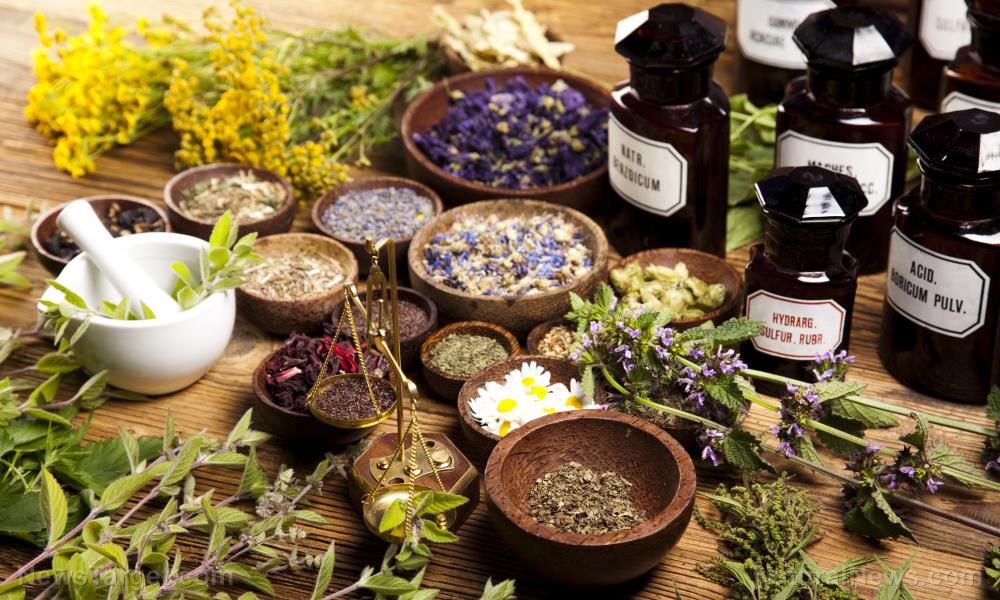A natural treatment for superbugs, thanks to traditional remedies from Cameroon
06/19/2020 / By Evangelyn Rodriguez

The use of traditional medicine is prevalent in many developing countries, thanks to it being accessible and reliable, as well as affordable. Of the many ailments traditional remedies address, infectious diseases caused by fungal or bacterial pathogens are among the most common.
In Cameroon, a large portion of the population considers natural remedies as their primary source of healthcare. In fact, herbal decoctions or powders are routinely sold in public places, as well as local markets across the country. Many rely on these medicines, but their quality, safety and efficacy have not been explored or confirmed by scientific studies.
To address this, researchers at the University of Buea in Cameroon decided to investigate the biological activities of 10 remedies commonly sold in marketplaces in southwest Cameroon. They also looked at the potential of these remedies to treat infections caused by antibiotic-resistant bacteria. The researchers reported their findings in an article published in the journal BMC Complementary and Alternative Medicine.
The safety and efficacy of natural antibiotics sold in Cameroon
According to the authors of the study, data on the reliability and safety of traditional medicines in Cameroon are scarce. The few studies they’ve found that looked into the antimicrobial properties of herbal products also reported contradicting results. In addition, a large number of products have been found to cause hepatoxicity, or drug-induced liver damage. Even more disturbing, these products also contained significant bacterial contamination.
To confirm these findings, the researchers purchased 10 popular remedies and analyzed their phytochemical components and microbial loads. They obtained methanol extracts from each remedy and used them to test for antibacterial activity and cell toxicity.
The researchers found that all 10 remedies had microbial loads above the acceptable limit (105?CFU/g), which confirmed contamination. Nevertheless, four of the 10 remedies showed antimicrobial activity against clinical pathogens, such as Citrobacter freundii, C. youngae, Enterobacter cloacae, Escherichia coli, Proteus mirabilis, P. vulgaris, Providencia rettgeri, Salmonella typhi and methycillin-resistant Staphylococcus aureus (MRSA).
Of the four remedies, three showed antibacterial activity against four of six control strains, namely, E. coli, Pseudomonas aeruginosa, S. aureus, S. epidermidis and two different strains of S. enterica. Meanwhile, two of the four extracts produced at least 20?mm zones of inhibition against multi-drug resistant C. freundii and E. coli. However, they were less potent than the antibiotic gentamycin.
On the other hand, only one of the four extracts showed bactericidal activity against MRSA at a minimum concentration of 8 mg/mL. The extracts obtained from the other remedies did not show cytotoxicity or cause any adverse effects in mice. Phytochemical screening revealed that the most active extracts contained high amounts of alkaloids and flavonoids.
Based on these results, the researchers concluded that some traditional remedies sold in Cameroon are effective against infections caused by multi-drug resistant bacteria. (Related: Fight antibiotic-resistant superbugs with these six powerful and natural alternatives to antibiotics.)
Plants with natural antimicrobial properties
Multiple studies suggest that plants have an almost limitless capacity to produce useful compounds. These plant nutrients — most of which are products of metabolism — serve a variety of purposes. For instance, they contribute to a plant’s defense mechanism and help protect against microbial pathogens, insects and herbivores. They also give plants their natural odor, flavor and vibrant color. Found commonly in fruits, vegetables, herbs and spices, these phytochemicals have plenty of medicinal properties. Here are some examples of well-known plants with antimicrobial components:
- Aloe vera — contains coumaric acid, cinnamic acid and ascorbic acid
- Apple — contains phloretin
- Ashwagandha — contains withaferin A
- Barberry — contains berberine
- Basil — contains terpenoids
- Black pepper — contains piperine
- Cashew — contains salicylic acid
- Chamomile — contains anthemic acid
- Chili peppers — contain capsaicin
- Eucalyptus — contains tannins
- Garlic — contains allicin and ajoene
- Green tea — contains catechins
- Hemp — contains B-resorcyclic acid
- Henna — contains gallic acid
- Lemon balm — contains tannins
- Licorice — contains glabrol
- Olive oil — contains hexanal
- Onion — contains allicin
- Peppermint — contains menthol
- Rosemary — contains terpenoids
- St. John’s wort — contains hypericin
- Tarragon and thyme — contain caffeic acid
- Turmeric — contains curcumin
- White willow — contains salicin
- Winter savory — contains carvacrol
Plants are veritable factories of various therapeutic agents. Modern research has only uncovered about 12,000 of these useful compounds, and scientists estimate they make up less than 10 percent of the total. Fortunately, many of these natural antibiotics can be found in common plants that people either grow in their own backyards or already have in their pantry. This makes them easily accessible and more economical than modern antibiotics.
To learn more about these useful plants, visit PlantMedicine.news.
Sources include:
Tagged Under: alternative medicine, antibiotic resistance, bacterial infections, Cameroon, herbal medicine, Herbs, natural antibiotics, natural cures, natural medicine, phytonutrients, plant medicine, remedies, research, superbugs



















